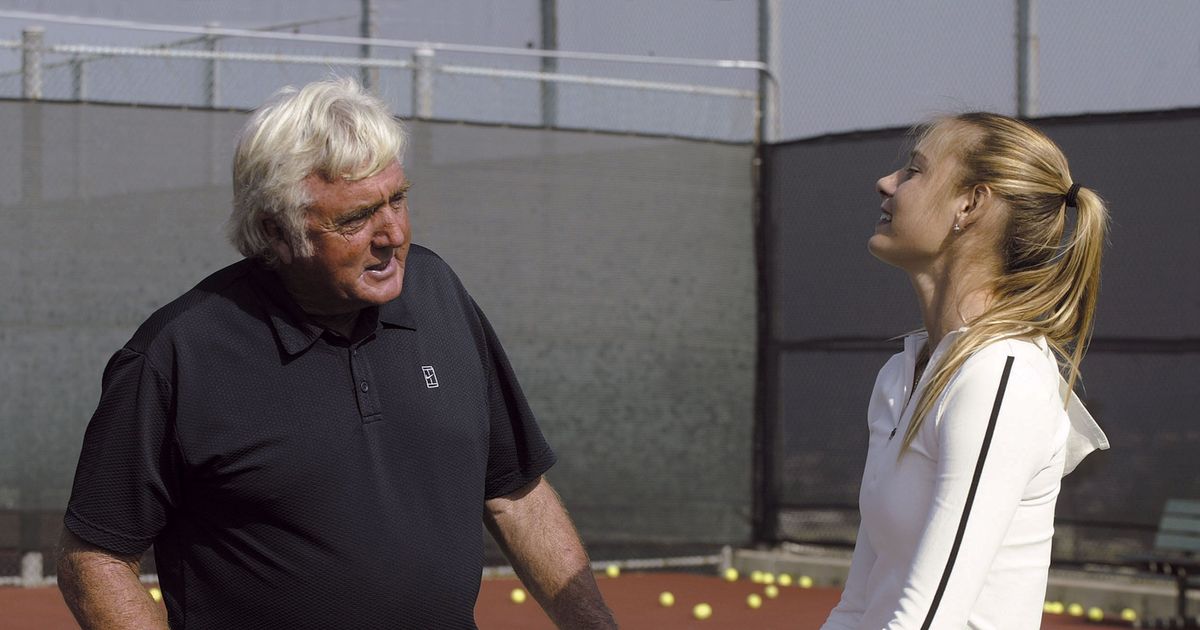
Robert Lansdorp, the pioneering coach based in California who mentored four World No.1s and impacted countless players at all levels throughout his career, has died at age 85.
Lansdorp, who was born in Indonesia and then moved with his family to the Netherlands before they relocated to the United States, played college tennis at Pepperdine University. The All-American will not be remembered for his competitive achievements, though. He became a legend as a coach, inspiring several generations of stars to reach their potential.
Lansdorp mentored both ATP and WTA greats from an early age, developing them into the international icons they became. Notable legends he coached include Tracy Austin, Pete Sampras, Lindsay Davenport and Maria Sharapova.
Lansdorp began working with eventual World No.1 Austin at the Jack Kramer Club in California when she was seven. In 1979, aged 16, she won the US Open.
“As a coach, it didn’t matter whether he was coaching a No.1 in the world or someone that was hoping to make the high school team, he gave 100 percent,” Austin told ATPTour.com. “He just loved the challenge of trying to make that person on the other side of the court the best tennis player that they could be. He enjoyed that. He actually enjoyed that challenge of making that person a better tennis player with the half an hour or the hour that he had.
“His DNA was to push you, but he also pushed himself. And I think when we realized that, then you were on board. You were on board [and knew] that we were on this journey together… He asked for perfection, but you were more than willing to try to get there.”
Another World No.1, Davenport, added: “Robert was so unique. He was a personality like no one I’ve ever met or been around, and I was really fortunate to have him come into my life when I was around nine years old.
“He changed my life in terms of, I would never have gone down the path or achieved anything I was able to achieve without having him in my life. It’s hard to put in words, because all of us that worked with him, I’ve talked to so many people in the last day and a half, and we have this bond even though we don’t necessarily speak all the time, just because of our history [with Robert]. He was so important to so many people over such a long period of time.”
The former No.6 player in the PIF ATP Rankings, Eliot Teltscher, also started with Lansdorp well before he was a teen. Now 65, he has remained close with his mentor ever since.
“I stopped playing tennis almost 40 years ago, but I stayed friends with Robert until the very end. So his impact for me didn’t end when I stopped playing tennis. His impact was, for me, for my life. The best way I could put it is he never stopped coaching me,” Teltscher said. “We would talk and discuss things and talk about things when I wasn’t playing tennis, when I was in my 40s and 50s and 60s. It never ended. He was, I think for me, a little more of a mentor than a coach.
“It didn’t stop when tennis stopped, it continued. A lot of times, you teach somebody when they’re done playing, that’s it, that’s the end of it. I’m going to speak for myself and not for others, but I think a lot feel the same way. My relationship with Robert never ended. It went on forever. I called him up every few months to just say, ‘Hey, what’s going on? What’s this? What’s that?’ It never, never stopped. So I’ll miss that.”
Author Malcolm Gladwell popularised the 10,000-hour rule, which presents the idea that it takes practicing a skill for 10,000 hours to master it. According to Teltscher, Lansdorp embodied that long before it was widely discussed like it is today.
“The most common thing people had was all his students tried really, really hard, and it was because of the respect they had for Robert as a person. It was that respect that you wanted him to be proud of you, so you tried really hard,” Teltscher said. “Before the guy came out with it, Robert was basically preaching it. If you want to get good, you’ve got to hit a million balls. And he had a very large basket of balls, much larger than, actually, anybody I’ve ever seen. And so you didn’t get too many breaks, and you got a tonne of balls until it became where you could do it without thinking. You could just do it.”
Austin recalled drills in which Lansdorp would hang a broom handle from the net with a hook and there would be a tennis can that would sit nicely on the top. It was a target that required a lot of accuracy. The coach would then feed ball after ball to see how often his player could hit it.
“You’d do it over and over again, and he’d place it for the cross court, and place it for the down the line, and then you’d play a game and see how many out of 10 you could get,” Austin said. “There was always some method to his madness, whether it was trying to hit you slices and top spins, or trying to make you hit on the rise, to challenge your timing, or trying to make you mentally tough.
“You’d play a game, and you’d be up in the game, and it’s 15-7 and he’d go, ‘Nope, it’s 15-7 for me’. You’d go, ‘No Robert, it’s 15-7 for me’, and he’d kind of chuckle. You knew he was doing this for a reason, just to [make you] dig in a little bit stronger and not give in, try to make you tougher.”
According to Davenport, Lansdorp’s drills remained the same over the decades. She did the same things Austin did and her son Jagger Leach, the junior World No.15 who is playing his first professional tournament this week, had to go through the same drills when he visited with Lansdorp in 2017.
“You had to become great at them, and you had to do them all the time,” Davenport said. “If you didn’t do it well one day, guess what? You were going to keep doing it until you figured it out.”
Brian Teacher, the 1980 Australian Open champion, began taking lessons with Lansdorp when he was a freshman at UCLA.
“He helped me quite a bit with hitting over my backhand,” Teacher said. “We would work out once a week. I always enjoyed my lessons with him. He pushed. He pushed all his kids very hard and harder.
“He would kind of make you want to vomit in the back of the court because he’d work you so hard, but you got better. No questions about that. He really specialized in getting you to hit the ball deep. To hit deep and penetrating balls, he liked you to hit clean through the ball. I think he pushed all his students hard. It was his specialty.
“Everybody loves Robert and they loved for him to work them out. He helped my game a ton and started me on a good progression as a freshman to move to the top of the ranks in college. I always considered Robert a good buddy as well as a great coach. I had true love for his passion and his character and humanity. He will truly be missed.”
Earlier this year, several of Lansdorp’s former players and others in the community gathered at the Jack Kramer Club to honor the 85-year-old. It is clear his legacy will carry on.
“He was a character,” Davenport said. “He won’t be forgotten, that’s for sure.”
Source: https://www.wtatennis.com/news/4122024/remembering-legendary-coach-robert-lansdorp-he-won-t-be-forgotten-


